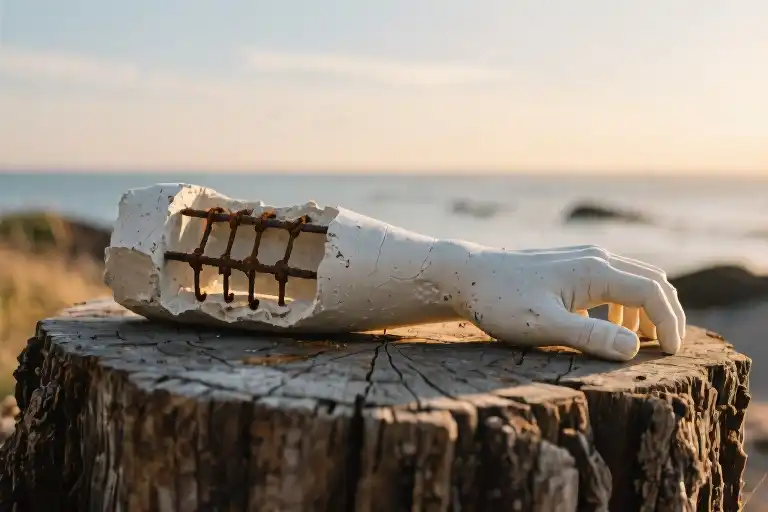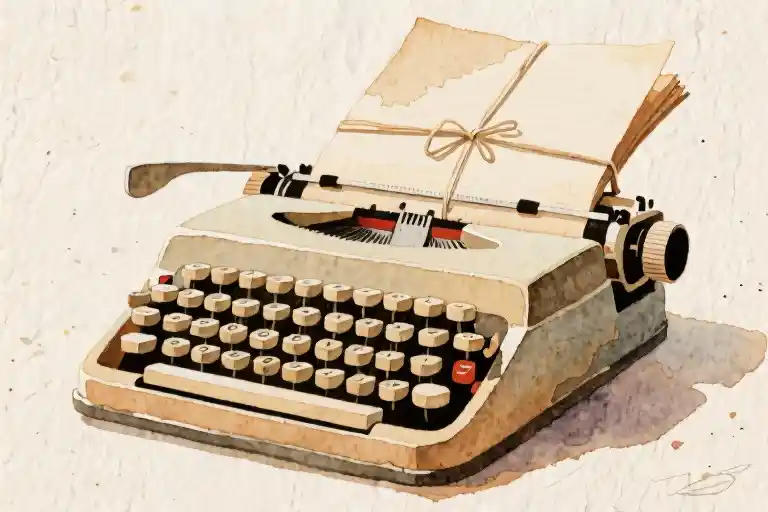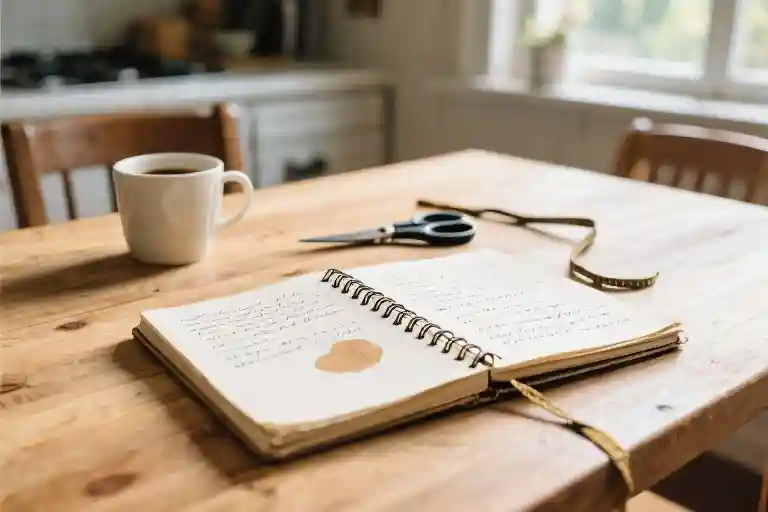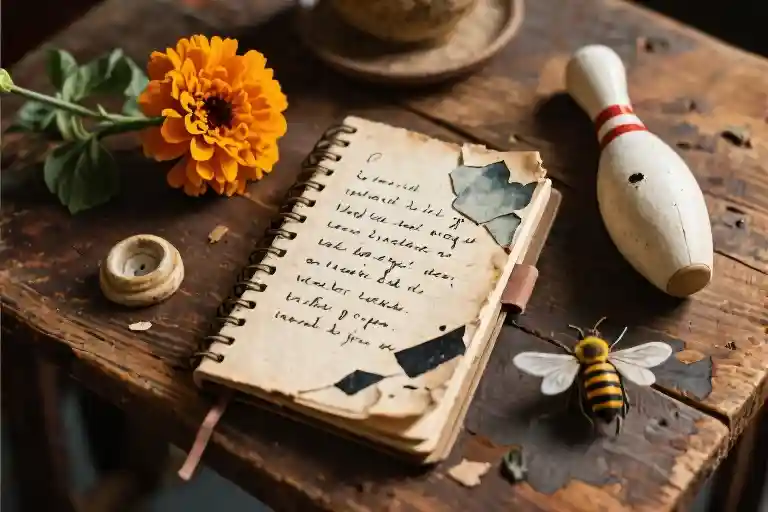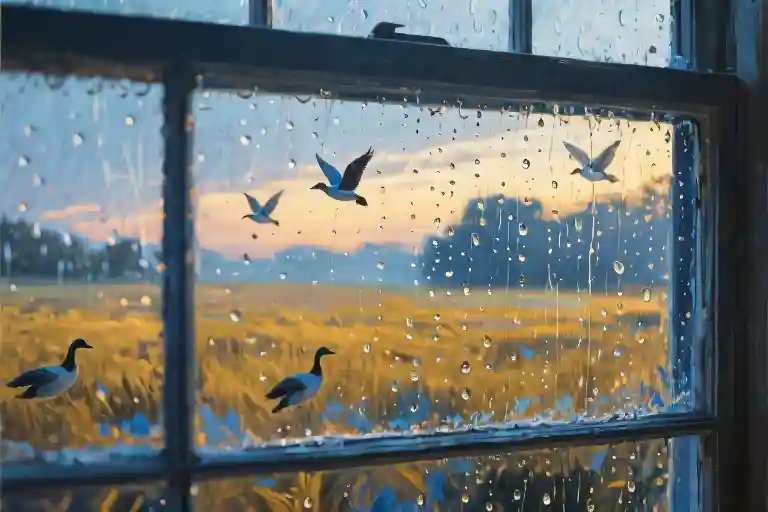The gravel crunched underfoot as I crossed the empty parking lot in that peculiar hour when night bleeds into morning but hasn’t quite decided to let go. That’s when I saw it—a severed plaster arm resting on a tree stump like some macabre offering.
Up close, it was strangely elegant. The fingers curled in permanent repose, except for the index finger which had broken off cleanly at the second knuckle. I picked up the rogue digit, rolling it between my fingers before slipping it into my pocket—a tiny rebellion against the morning’s strangeness.
Hoisting the arm onto my shoulder, I nearly staggered. The weight surprised me—not just plaster then. Peering into the jagged shoulder socket, I spotted the culprit: rusting rebar protruding like broken bones. The forearm had that peculiar texture of sun-baked plaster, warm and granular against my palm.
After scanning the perimeter for any armless statues (and finding none), I gave the bicep an apologetic pat before loading my find into the Outback’s trunk. It landed with a hollow thud that seemed to say, ‘Well, this is my life now.’ The arm would make excellent company for my growing collection of peculiarities back home—a surreal short story waiting to be told.
Key details that bring this surreal moment to life:
- The uncanny weight of the plaster arm creates immediate physical tension
- Sun-baked bicep and rusting rebar provide contrasting tactile details
- The casual act of pocketing the broken finger establishes the narrator’s dark humor
- Trunk thud serves as auditory punctuation to the bizarre encounter
This opening sequence leans into experimental writing techniques by:
- Treating the grotesque with mundane practicality (“loading my find into the Outback’s trunk”)
- Using object personification (the trunk’s “hollow thud” as commentary)
- Establishing campus gothic atmosphere through incongruous morning light and abandoned artifacts
The scene rewards readers who enjoy dark humor literature with its deadpan delivery, while sensory details (crunching gravel, warm plaster) ground the surreal premise in physical reality—a hallmark of effective surrealist descriptions.
The Anatomy of a Plaster Arm
The severed arm lay across the gravel parking lot stump like a misplaced Renaissance study, its plaster fingers curled in eternal repose. Only the index finger rebelled – a clean break at the second knuckle where it had “chosen freedom,” as I mused while pocketing the fragment. The morning sun had baked the bicep to a warm terra-cotta hue, though the jagged shoulder joint revealed the industrial truth beneath: rust-speckled rebar protruding like fossilized bones.
Hoisting it onto my shoulder required unexpected effort – this wasn’t some flimsy theater prop. The arm carried the substantial weight of something designed to endure, its hollow core reinforced with steel that now served no purpose. I traced the fracture lines with my thumb, imagining the plaster’s journey from some art studio’s discard pile to becoming my peculiar roadside discovery. The rebar’s exposed end left reddish smudges on my shirt, as if the arm itself objected to relocation.
“You’ll make a splendid conversation piece,” I assured it, giving the sun-warmed surface a companionable pat before arranging it carefully in my Subaru’s trunk. The liberated index finger rattled in my jacket pocket as I closed the hatchback, already envisioning how the arm would look displayed on my oak mantle between a geodesic bookend and that peculiar thrift store candelabra. There’s an art to curating life’s oddities – this plaster limb with its industrial skeleton would become another artifact in my personal museum of the wonderfully incongruous.
What fascinates me most is the duality of its construction: the delicate outer shell mimicking human form with anatomical precision, contrasted by the utilitarian steel within. The arm was designed to appear whole while being fundamentally fractured – a metaphor I couldn’t ignore as I drove away, the trunk occasionally emitting metallic creaks from its unusual cargo. Perhaps all beautiful things contain their own ruin, their rebar always waiting to be exposed by time’s relentless weathering.
The Pastoral Campus
The campus unfolds like a watercolor left in the rain—edges blurring where manicured lawns dissolve into wildflower meadows. No stern bell towers here; instead, clusters of cedar-shingled cabins exhale woodsmoke into the salt-tinged air, their wide porches strewn with Adirondack chairs that face the horizon. I trace the gravel path with my soles, each step releasing the scent of crushed thyme as the Atlantic winks between swaying stands of beach grass.
Six years I’ve wandered these meandering trails—six years of watching storms roll in from the observation deck of the marine biology lab, of sketching equations on picnic tables beneath the white noise of windchimes. They call it academic probation back at state universities; here, they simply nod when you request another semester among the hydrangeas. My transcript reads like a surrealist poem: Advanced Calculus followed by Tidal Zone Ecology, a defiant minor in Glassblowing wedged between the expected engineering courses.
At the main square (though ‘square’ implies right angles this place politely declines), a bronze sundial tilts perpetually toward the ocean. Its shadow falls across a mosaic of broken pottery shards—some mine, from that ill-fated ceramics elective. Students here measure time in low tides and apple harvests, mark seasons by when the blueberries stain the library steps purple. Even the administrative building crouches low like a gardener’s shed, its only clock a sundial painted on the roof.
Down by the boathouse, where kayaks bob like corks, I find the exact spot where the lawn surrenders to sand. The salt wind plucks at my shirt sleeves with the same insistence as my thesis advisor. Somewhere behind me, in the trunk of my car, the plaster arm’s rebar bones clink against a spare tire. Both of us—the arm and I—have chosen unconventional forms of permanence. The campus hums its approval through the drone of cicadas, this haven where even the statues are allowed to shed their limbs and the students their four-year plans.
Fragmented Echoes
The gravel crunches underfoot as I cut through the arts quad, the plaster arm’s weight still lingering in my shoulder muscles like a phantom limb. Between the birch trees, the sculpture studio’s floor-to-ceiling windows reflect the afternoon sun, flashing like a beacon for the creatively maimed.
Inside, a half-formed clay torso rotates on a stand, its missing arms mirroring my trunk’s contents with uncomfortable symmetry. A student wipes her forehead with the back of a wrist, leaving terracotta smudges on her temple. On the bulletin board beside the door, a sun-bleached poster for Advanced Casting Techniques flaps in the breeze from an oscillating fan, its torn corner revealing the word “FRAGILE” beneath.
I press my palm against the glass, feeling the vibration of a grinding tool through the pane. The studio smells like wet minerals and burnt coffee even from here – that particular academic musk of sleep deprivation and obsession. My breath fogs the window just as the student looks up, her gaze sliding past me to the disembodied arm sculptures lining the shelves behind her workstation. One of them, a bronze forearm missing its pinky, seems to wave at me with grotesque cheer.
A janitor’s cart rattles by, pulling my attention to a bucket filled with plaster chunks the color of old teeth. The largest fragment still shows the curve of a knuckle. I find myself patting my jacket pocket where the liberated index finger rests, its shape now familiar as a worry stone.
Outside the studio, a weathered stone bench bears the carved names of decades of art students. The ‘M’ in “Marlowe 03” has cracked cleanly along the serif, creating a miniature version of the plaster arm’s fracture. I run my thumb along the break as the ocean wind carries the sound of chisels biting into wood from an open window above.
My keys jingle when I stand, and for a moment I imagine the sound coming from the Outback’s trunk – a metallic chuckle from my new passenger. The sculpture studio’s door swings open as I walk away, releasing a gust of air that smells exactly like the inside of the plaster arm: dust and patience and something faintly organic.
At the crosswalk, a tour group passes clutching campus maps. The guide points to our school’s motto carved above the library entrance: “Per Fracturam, Integritas.” Through brokenness, wholeness. My laughter surprises even me, sharp as a chisel strike, and the prospective students edge away as I turn toward the parking lot where this all began.
The Ocean’s Whisper
The Atlantic stretched before me, its surface catching the late afternoon light like crumpled foil. Six years—non-traditional, thoroughly mine—had led to this moment of standing at the edge where manicured grass met untamed ocean. A salt-tinged breeze carried the sound of waves folding into themselves, a rhythm that almost drowned out the faint thud from my car’s trunk.
I leaned against the weathered railing, its peeling paint catching at my sleeves. The plaster arm’s presence announced itself again, the rebar inside tapping against spare tire tools with each gust that rocked the Outback. There was something poetic about it: this severed limb traveling with me to witness the horizon line where water met sky, both infinitely whole and perpetually fragmented.
Students passed behind me, their laughter rising above the surf. None glanced toward the source of the irregular metallic sighs from my vehicle. Why would they? Here, where garden pathways unfurled like ribbon and ocean spray jeweled the air, a broken sculpture was the least remarkable thing. The campus absorbed oddities as easily as its thirsty soil drank rainwater—my six-year meander through its embrace stood testament to that.
Another muffled impact from the trunk. The arm’s sun-warmed plaster surface would be cooling now in the shadowed compartment, its freed finger still nestled in my pocket alongside dorm keys and loose change. I pressed my thumb against the digit’s curve through the fabric, feeling the ridge where it had separated from the hand. Somewhere behind us, art department kilns would be firing new creations while the ocean reclaimed fragments of old ones, grinding them smooth as the pebbles beneath my shoes.
‘Non-traditional,’ I murmured to the waves, tasting the phrase like the salt on my lips. The trunk’s answering knock might have been agreement, or simply physics. Either way, it belonged here—this beautiful, broken thing rolling toward home between garden and abyss, between student and graduate, between what was and what might yet be made whole again.

